Table of Contents
Key Takeaways
- Blue-Chip Stocks Overview: Blue-chip stocks are well-established, financially sound companies with consistent earnings, strong brand recognition, and a history of paying dividends. They are ideal for long-term investors seeking stability and moderate, reliable returns.
- Strengths of These Stocks: These blue-chip stocks are known for their solid financials, leadership in core industries, steady dividend payouts, and ability to weather economic downturns. They provide a strong foundation for any long-term investment portfolio.
- Investment Strategy Tips: Investors are advised to diversify across sectors, monitor quarterly performances, and consider valuations before entry. Investing through index-based ETFs or SIPs is suggested for reduced risk and simplified tracking.
- Long-Term Value Proposition: While blue-chip stocks may offer slower capital appreciation compared to small or mid-caps, they provide safety, consistency, and compounding benefits over time. They remain a reliable choice for conservative investors aiming for wealth preservation and steady growth.
- Top Picks:
- Reliance Industries
- TCS
- HDFC Bank
- ICICI Bank
- ITC
The phrase “blue chip” comes from the poker card game. The most basic poker chip sets consist of three colors: white, red, and blue. According to American custom, blue chips are the most valuable among the other chips played in the game.
What are Blue Chip Stocks?
High-priced market equities, known as blue chip stocks, have recently been popular among investors. The corporations that issue blue chip stocks are held in high regard in the stock market and often have a solid track record of financial stability and reputation.
In addition to their reputation, these businesses’ excellent dividend payout policies can be responsible for the stock’s rising appeal. However, people should arm themselves with crucial facts before investing in blue chip stocks.
Blue chip stocks are those of large-cap businesses or those with a high market capitalization. Companies that issue blue chip stocks are well-established and have a solid reputation in the market due to past track records in wealth creation, corporate governance, profitability, execution, etc. It is very important to analyze the market with the help of an efficient stock market analysis app for making more informed investment-related decisions.
Key factors to look at before investing in Blue Chip Stocks
Financial performance of the company
Before investing in a blue chip stock, research the company’s financial performance, including revenue growth, profit margins, debt-to-equity ratio, return on equity, return on capital employed, and profits per share. This will provide information on the company’s financial health and potential to make profits.
Industry forecast
It is also vital to analyze the company’s outlook, particularly when considering investments in blue chip stocks. Competition, the regulatory environment, technical advancements, and macroeconomic conditions can influence the company’s performance and affect the long-term stability of blue chip stocks.
Management team
When considering investments in blue chip stocks, evaluating the management team’s experience, track record, and growth strategy is essential as the management team is critical to the success of the company.
Valuation
Blue chip stock prices should be analyzed concerning the company’s profits and growth potential. Even if it is blue chip stocks, it is critical to avoid overpaying for it.
Dividend history
Many blue chip stocks pay dividends to their shareholders. While making an investment selection, it is critical to evaluate the company’s dividend history and dividend yield.
Long-term investing horizon
Blue chip stocks necessitate a long-term investment horizon. It is critical to maintaining patience and not be misled by short-term market volatility.
ROCE
Return on Capital Employed (ROCE) is a financial measurement that compares a company’s profitability to the capital invested in the organization. When investing in blue chip stocks, consider ROCE while analyzing a company’s financial health. When calculating a company’s ROCE, it’s critical to consider the industry in which it works. Because typical ROCE values vary by sector, comparing a company’s ROCE to its rivals within the same industry is essential.
Mindset before Investing
Before investing in any kind of securities, one should thoroughly research the securities in question.
Before investing in blue chip stocks, One should have a strong belief in the company and faith in the management because the time horizon for these investments is long-term (Buy and Hold). These shares have very little volatility as they have a long track record and have survived many business cycles.
One cannot anticipate that TCS or Reliance will cease operations tomorrow, but it’s doable, just like with Satyam Computer.
Top 5 Blue Chip stocks to look upon
Below is the list of top 5 Blue chip stocks:
Let’s look at the Financial overview of the top 5 blue chip stocks in India
Tata Consultancy Services Ltd
As a leading member of the Tata group and a renowned blue chip stock. For over 50 years, it has partnered with many of the world’s leading enterprises on their transformation journeys through IT services, consulting, and business solutions. TCS provides a comprehensive portfolio of business, technology, and engineering services and solutions headed by consulting.
Financial
- TCS’ top line climbed 19.1% year on year to Rs. 58,229cr (+5.3% quarter on quarter), driven by global demand for cloud services, vendor consolidation, and new deal wins across all verticals.
- On a constant currency basis, revenue from the Banking, Financial Services, and Insurance (BFSI) sector increased 11.1% year on year to Rs. 22,145cr. Life Sciences & Healthcare, Technology & Services, Communications & Media, and Manufacturing all grew 14.4%, 13.6%, 13.5%, and 12.5% year on year.
- Operating margin increased sequentially to 24.5% (+50bps), driven by currency movement (+70bps) and reduced subcontractor costs (+30bps), offset by third-party expenses.
| Key Ratios | 2018 | 2019 | 2020 | 2021 | 2022 |
| Net Sales Growth (%) | 4.46 | 18.98 | 7.16 | 4.61 | 16.80 |
| PAT Margin (%) | 21.02 | 21.55 | 20.67 | 19.83 | 20.05 |
| Current Ratio | 4.56 | 4.17 | 3.33 | 2.91 | 2.56 |
| ROCE | 39.84 | 47.8 | 50.02 | 52.56 | 60.22 |
| PE | 10.54 | 23.84 | 21.41 | 36.25 | 35.7 |
ICICI Bank
ICICI Bank is a prominent private sector bank in India that provides various financial goods and services to individuals, small and medium-sized businesses, and corporations. The bank has many branches, ATMs, and other contact points.
With 5,614 branches and 13,254 ATMs across the country, ICICI Bank is India’s second-largest private sector bank. And has approximately 51% of its branches in semi-urban and rural regions. This combination of extensive reach and diverse offerings has made ICICI Bank a popular choice among investors looking for blue chip stocks.
Financial
- As of Q2FY23, GII increased to Rs. 26,033cr (+22.6% YoY, +10% QoQ), boosted by a 30bps sequential growth in NIM and a 4.8% QoQ increase in advances. On the other hand, interest expenditures grew to Rs. 11,246cr (+17.8% YoY, 7.5% QoQ) as deposit costs rose to 3.5% (from 3.4% in Q1FY23).
- NII increased by 26.5% year on year and 11.9% quarter on quarter to Rs. 14,787cr. The cost-to-income ratio fell sequentially to 41.1% from 42.3%, but operational expenditures increased by 7.9% due to personnel and technological challenges.
- As a result, pre-provision operating profit (PPoP) increased to Rs. 11,680cr (+17.8% year on year, +13.3% quarter on quarter), while the provisions to core operating profit ratio increased to 14% (+290bps quarter on quarter). PAT increased by 24.4% year on year.
| Key Ratios | 2018 | 2019 | 2020 | 2021 | 2022 |
| Cost Income Ratio (%) | 65.82 | 69.75 | 68.03 | 64.35 | 62.86 |
| Net Interest Margin (%) | 2.71 | 2.90 | 3.14 | 3.15 | 3.25 |
| CASA (%) | 51.32 | 48.78 | 44.84 | 46.17 | 48.6 |
| ROE | 8.70 | 5.20 | 9.72 | 14.74 | 15.49 |
Eicher Motors Ltd
Eicher Motors Limited, founded in 1982, is the listed corporation of the Eicher Group in India, a significant participant in the Indian vehicle industry, and the world’s top manufacturer of middleweight motorcycles. EML is a blue chip stock listed company of the Eicher Group in India. The company also has a joint venture with Sweden’s AB Volvo named Volvo Eicher Commercial Vehicles Limited (VECV).
Financial
- In Q2FY23, EML’s consolidated revenue increased by 55.8% year on year to Rs. 3,453cr, the highest quarterly figure ever. The rise was primarily attributable to increased sales of the company’s freshly released Hunter 350 motorbike.
- EML sold 2,03,451 bikes during the quarter, up from 1,23,515 in Q2FY22, a 65% YoY growth (9% QoQ). Domestic volume increased 73% year on year (16% quarter on quarter) to 1,83,067 units, while overseas sales increased 14% year on year to 20,384 units.
- The company also reported strong EBITDA growth of 74.9% year on year to Rs. 822cr, with EBITDA margin improving 260bps year on year to 23.8%, mainly owing to cost reduction.
- EML has increased its market share in both domestic and foreign markets. Its market share increased to 7% in the Americas, 9% in APAC, and 10% in EMEA, due to the introduction of new products.
- Domestically, the company’s market share in the above 125 cc category increased to more than 30% in H1FY23 due to stronger festive season sales. In addition, VECV had a market share of more than 8.0% in the heavy-duty vehicle class, with EML alone accounting for 7.3%.
| Key Ratios | 2018 | 2019 | 2020 | 2021 | 2022 |
| Net Sales Growth (%) | 27.46 | 9.28 | -6.57 | -4.73 | 18.09 |
| PAT Margin (%) | 20.86 | 20.02 | 19.54 | 15.03 | 15.62 |
| Current Ratio | 1.12 | 2.10 | 3.16 | 3.35 | 1.88 |
| ROCE | 45.33 | 37.41 | 24.36 | 16.42 | 17.81 |
| PE | 3.94 | 2.54 | 1.96 | 52.83 | 40.12 |
Bajaj Finserv Ltd
Bajaj Finserv Ltd. is a well-established player in the financial services industry and can be considered as one of the top blue chip stocks in the market. It provides asset acquisition solutions through financing, general insurance, family and income protection through life and health insurance, and retirement and savings solutions to millions of consumers.
Financial
- Results for Q2FY23, Bajaj Finserv, has reported a strong performance driven by its loan division. Consolidated topline growth was ~16% year on year to 20802 crores, driven principally by a strong revival in the loan business.
- Lower provisioning in the loan industry and life insurance profitability resulted in combined earnings of 1556.9 crores, up 38.7% year on year. AUM increased by 30.8% year on year in the loan business to 218366 crores, with stable margins and opex and provision resulting in substantial profit growth.
- GNPA and NNPA were 1.17% and 0.44%, respectively, in Q2FY23, compared to 1.25% and 0.50% in Q1FY23. General insurance gross written premiums fell 5% year on year to 4781 crores.
Asian Paints Ltd
Established in 1942, the Asian Paints group is one of India’s most reputable blue chip stocks and the largest paint company in the country, producing varnishes, enamels, lacquers, surface preparation, organic composite solvents, and thinners. It operates in 15 countries and 26 paint production plants worldwide, supplying customers in over 60 nations.
Financial
- Asian Paints extended its double-digit volume growth trend in Q2FY23 Results, with a 10% volume rise. Tier 3 and 4 cities grew faster than T1 and T2 cities. Consolidated sales increased by 19% year on year to 8457.6 crores, driven by better growth in decorative paints and industrial operations.
- To offset rising raw material prices, the company has implemented a 1% pricing increase in Q2FY23 (on top of a 22% price increase in FY22 and a 2% price increase in Q1FY23).
- Gross margin fell 197 basis points (bps) quarter on quarter (up 98 basis points year on year) in Q2FY23 owing to a price increase delay and poor product mix. Along with more significant advertising expenditures, brought total EBITDA down by 356 basis points QoQ (up 177 basis points year on year) to 14.5%.
- On the heels of topline growth, PAT increased 33% year on year to 803.8 crores. The management anticipates inflation to moderate due to recent falls in raw material costs. However, an uncertain geopolitical environment and a stronger US dollar are crucial catalysts that might counteract commodity price declines.
- In addition, It has signed a 60:40 joint venture with Riddhi Siddhi Group to build a 2.65 lakh MT per annum white cement & white cement facility in Fujairah, UAE. The needed investment is Rs. 550 crores. The Riddhi Siddhi group has access to high-quality limestones, a critical component of white cement. White cement is a vital putty component used as an undercoat before painting.
| Key Ratios | 2018 | 2019 | 2020 | 2021 | 2022 |
| Net Sales Growth (%) | 11.33 | 14.58 | 4.72 | 7.15 | 34.03 |
| PAT Margin (%) | 10.27 | 9.78 | 11.66 | 12.49 | 8.88 |
| Current Ratio | 1.55 | 1.47 | 1.73 | 2.03 | 2.00 |
| ROCE | 36.65 | 35.44 | 35.78 | 36.95 | 30.65 |
| PE | 52.72 | 66.38 | 59.10 | 77.51 | 97.54 |
Alternative Way to Invest
Investing in blue chip stocks, which are large-cap stocks with strong fundamentals and track records, is a popular option for investors seeking stable returns. However these large-cap stocks typically trade at a premium due to their strong fundamentals and track records, and blue chip stocks are also constituents of the Nifty 50 Index. Holding these large-cap shares in substantial volumes is nearly hard for retail investors.
One alternative for blue chip stocks can be to invest in ETFs (Exchange Traded Funds) or Mutual Funds of the index. The only negative is that the investment will be spread among multiple companies. For example, the sum invested in the Nifty 50 index fund will include India’s top 50 companies. This will lead to over-diversification. Before investing in any AMC, one must also consider tracking error and expense ratios. So Invest in those AMC with a minor expense ratio, tracking error, and good track record.
Rationale
Because of their moderate volatility, these large-size stocks are ideal for a peaceful investment. Apart from capital appreciation of the stocks, these large-cap stocks also had an excellent Dividend Payout ratio. Therefore provides a steady cash flow to an investor as an additional income. These equities are also included in the Nifty 50 Index. These firms have weathered multiple business cycles and are the market leaders in their respective fields.
However, as with such companies, various risks are associated, such as volatility in raw material prices, the slowdown in the economy, etc. which can impact the Company’s performance.
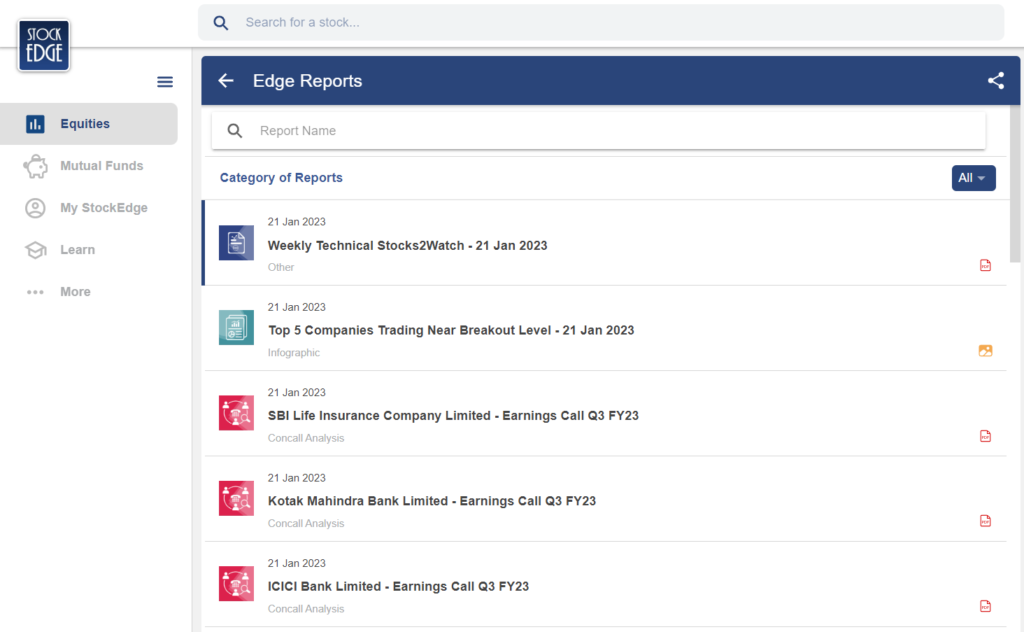
So, we suggest you track them on a quarter-on-quarter basis in the upcoming year (2023) and also track the Edge Report section for any premium reports from our StockEdge Analysts. We would also advise consulting your SEBI registered investor before investing in any of these.
Until then, keep an eye out for the next blog on “Stock Insights.” Also, please share it with your friends and family.
Happy Investing!



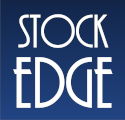




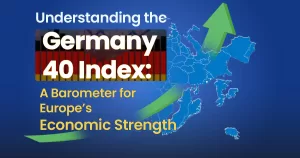
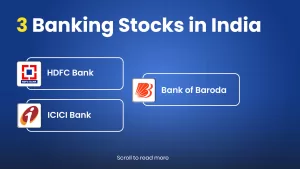
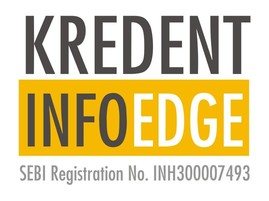

Best information is given by you.
And
Thanks for Vivek sir
good suggestion given
quite informative for small investors ,keep it up
best crispy information given…
appreciate yr inputs
best crispy information given…
appreciate yr inputs